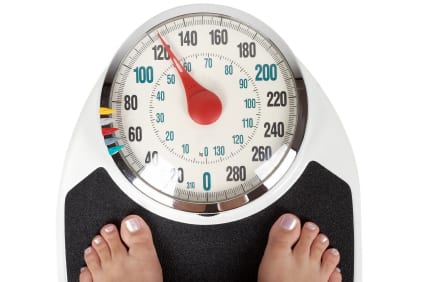
Besides height and weight, can you guess what feature is most strongly correlated with body mass index (BMI)? Over the next few months, we’ll be testing your knowledge of some of the most interesting associations we’re seeing in the 23andMe database. Guess right, and you could win cool prizes, including gift cards and 23andMe schwag! Then come back the next week to learn the answers and see who won.
This quiz is now closed. Read on to learn more about how we find these associations!
What can we discover?
23andMe helps its customers connect with the latest research on correlations between genetic variations and health conditions and traits. These genetic variations could be pieces of the puzzle explaining why some people develop, say, type 2 diabetes, or why some people have curly hair.
With the help of our customers we’ve also made new discoveries of genetic associations for things like smelling the asparagus when you pee, Parkinson’s disease, and hypothyroidism. But you can explore correlations between practically anything, and 23andMe’s database, which so far has more than 150,000 genotyped customers contributing more than 40 million answers on hundreds of different topics, is a uniquely powerful platform for discovery.
What’s in a correlation?
Does correlation imply causation?
No. Correlation sometimes points to causes — cigarette smoke contributing directly to lung cancer is a common example — but it can often be due to some other underlying factor. For example, owning a house may be correlated with lower risk of type 2 diabetes*, but this doesn’t mean that home ownership protects you from having the disease. Instead, it could be that some other factor, such as higher socioeconomic status, makes it more likely that someone is able to buy a house as well as eat a healthier diet, which helps lower one’s risk for type 2 diabetes.
To avoid these sorts of “phantom” associations, researchers often add include demographic or other factors in their analyses to see if those factors explain away the findings. This is usually referred to as “controlling for” various factors.
* fictitious example
When we search for correlations, we’re looking to see whether there’s a relationship between two different variables, such as smoking and lung cancer. Sometimes we might investigate the relationship between two specific things, but often researchers will look at many different variables to see if any of them are correlated with the outcome of interest. In genetic associations, most studies routinely look at thousands or millions of genetic variants to find correlations with a trait or disease.
When we do this, we are essentially testing many different hypotheses at once. Each variable that you investigate gives you another chance to find a correlation, but if you find one, is it because it’s a real correlation, or simply because you looked at so many variables that one of them just happened to work? We can calculate statistics to measure how likely it is for a finding to be due to chance (also called “statistical significance”), and adjust these statistics based on how many different things we’re testing. After all that’s said and done, the less likely it is that a finding is due to chance, the more likely it is to represent a real association.
More than genetics
Because 23andMe looks at numerous traits as well as genetics, we can explore not just whether genetic factors are correlated with traits, but whether different traits are correlated with each other. For example, we’ve tested BMI against approximately 1000 different traits, habits, and conditions reported by our customers. What we found might surprise you…



